Abstract
Orientation: Literature is scanty on the euphoria around Ghana’s electioneering activities and their impact on economic activities.
Research purpose: This article studies electioneering activities and their impact on the Ghana Stock Exchange (GSE) returns.
Motivation for the study: Literature have established that political risk is statistically significant in emerging stock markets and from 5 January to 7 December 2016, the GSE lost 23.47% of its trading values. Hence, this article finds it imperative to examine whether electioneering activities indeed have an impact on GSE.
Research approach/design and method: Using daily data span from 5 January 2016 to 7 December, 2016. The autoregressive distributed lag (ARDL) bound test approach to cointegration and Granger causality test was used to examine the data.
Main findings: The result suggests that electioneering activity impact negatively on the GSE returns both in the short-run and long-run, but its cause is not clear. It impacts creates arbitrage opportunities for investors and may punish the political party in power.
Practical/managerial implications: Political parties in power should recognize that electioneering activities creates a dilemma between regaining power or managing the economy.
Contribution/value-add: Ghana’s electioneering activities disproves some investment theories, that is, investors assume risk may not reflect their expected return since the stock market efficiency is nullified by arbitrage opportunity.
Keywords: electioneering activities, Ghana Stock Exchange, political party, ARDL bound test, Granger causality test.
Introduction
The overthrow of Ghana’s first president through a coup d’état [seizure of power] never ended there; the nation experienced three different coups d’état and two democratic elections. These inconsistencies led to an unstable economy after independence for an extended period. However, in 1992, a referendum to return to democracy was passed, which resulted in the 1992 national elections won by Mr. Jerry John Rawlings. Ghana’s changing into a democratic country resulted in several aids from western countries, which boosted the country’s economic recovery. Besides, the referendum empowered politicians to make a significant policy decision and formulate regulations to govern the nation directly or indirectly affect the nation’s economic activities.1 To attain the nation’s mandate to rule, every 4 years political parties campaign vigorously to unseat the government in power or to retain power. These activities have not been free of incidents. In 1992, most opposition parties boycotted the general elections.
In 2012, after the declaration of the results of the elections (the party in power polled 50.7%, the major opposition party (MOP) polled 47.7% and other opposition parties polled 1.6%), the MOP filed a petition in court against the final result, citing irregularities, manipulations and improprieties. The MOP debated their case based on two key areas: bloated voters register and the electoral commission (EC) collusion, incompetence and deliberate negligence. This court action was sat on by nine-member high court supreme judges for 8 months. During the 8 months hearing of the case, partisan analysts wrote critical commentaries and traded accusations over the media. This brewed political tension in Ghana, which negatively affected economic and social activities and created fear for life and property (Bamfo 2014).
On the other hand, Africa’s stock market can be classified as an emerging market and is made up of 29 markets with 21 registered as members of the African Security Exchange Association (ASES).2 The Ghana Stock Exchange (GSE), being a member of ASES, was incorporated in 1989 with trading commencing on 12 November 1990.3 The GSE was started with three stockbrokers, 11 equities and one commemorative bond, but in 2016, the GSE can boast of 38 listed equities, 97 government bonds, 21 license dealing members, fully automated trading system and a fully automated trading system more than GH¢2.1 billion raised through equity finance. The GSE Composite index grew from 70.25% in 1990 to 857.98% by the end of 2000. Nonetheless, it experienced negative performance in 2015 (−11.77%) and 2016 (−15.33%).
Investing in the stock markets attracts several risks, such as political risk, exchange rate risk, capital flow risk across national boundaries and inflationary risk (Bodie, Kane & Marcus 2014). Political risk is defined by Günay (2016) ‘as the destabilization which arises from government turnover and the resulting policy changes in the economy and international relations’. Political risk comes in many forms like political instability, electioneering activities, corruption, coup d’état, presidential elections, civil uprising and terrorism. It is well established that political risk is statistically significant in emerging stock markets (Perotti & van Oijen [2001] cited in Lehkonen & Heimonen [2015]). Besides, from 05 January to 07 December 2016, the GSE lost 23.47% of its trading values (i.e. dropping from 1996.52 to 1527.94). Hence, this article finds it imperative to examine whether electioneering activities indeed have an impact on GSE.
Therefore, this article seeks to study electioneering activities and their impact on the GSE. This is achieved by answering the short-term and long-term effects of electioneering activities on the GSE. The autoregressive distributed lag (ARDL) bound test approach to cointegration and Granger causality test were used to examine the daily data. The result shows that electioneering activity negatively affects the GSE returns both in the short-run and long-run, and the results correlate with work of Angelini et al. (2018), Dӧpke and Pierdzioch (2006) and Günay (2016). The abysmal performance of the GSE market may send the political party in power into opposition and does create arbitrage opportunities for speculators (disproving the arbitrage pricing model). The remainder of this article is arranged as follows: the ‘literature review’ section looks at literature in the field of study, and the ‘methodology’ section describes the methods used to analyse the daily data used. The ‘results and discussion’ section dives into the result implication, whilst the ‘conclusion’ section captures the finding and future research of the article.
Literature review
The Collins Dictionary defines electioneering as the activities politicians and supporters carry out to persuade people to vote for them or their political party in an election. In the same vein, Bassey (2013, cited in Edegoh & Anunike 2016) defined the electioneering campaign as ‘an effort to persuade or dissuade prospective voters in an attempt to gain partisan advantage in the electoral process’. Another definition by Obikaeze and Ernest (2016) emphasised that electioneering campaigns are mainly activities by political parties to promote their party, especially during election periods, and are aimed at convincing the electorates to vote for the party during the elections. They identified rallies, house-to-house campaigns, one-on-one discussions, conventions, candidate forums and modern media of communication (radio, television, newspapers, magazines, internet, billboards and others) as forms of electioneering campaigns. In this article, electioneering activities is defined as the activities that politicians, their supporters and all stakeholders carry out to persuade or dissuade prospective voters from gaining an electoral advantage for a party in power or opposition during elections. This includes rallies, house-to-house campaigns, one-on-one discussions, conventions, candidate forums and others reported by Ghanaweb during the 2016 elections.
Electioneering activities can be classified as a systematic risk under the arbitrage pricing model. Systematic risk is common to all stock on a stock market and cannot be diversified, while idiosyncratic risk emanates mainly from the industry and can be diverse. Arbitrage pricing theory (APT) draws it strength from the law one price, which states that in an equilibrium market, the price of two assets bearing the same risk must be equal; otherwise, arbitrage opportunity will arise to take advantage of such disequilibrium (Nguthi 2013). Another key theory is the efficient market hypothesis (EMH.), which states that a share price reflects all the relevant information on the market (Fama et al. 1969; Markowitz 1952). From this definition, two key assertions can be made: stock price adjusts rapidly to any new information and fully reflects all suitable information (Nguthi 2013). Finally, the modern portfolio theory reveals a positive relationship between risk and expected return of financial assets (Markowitz 1952). That is, the higher the risk, the higher the reward. Summing these three key theories, it clear that during the electioneering year, investors assume critical risk, which must reflect in their expected return base depending on the stock market efficiency nullifying any arbitrage benefits. However, is that really the case during Ghana’s 2016 electioneering year?
Electioneering Campaigning sets the tone for political parties to market their manifestoes to the electorate (Alom 2013), but at the same time, it may be marred by defamatory, derogatory and insulting attacks on rival parties and individual personalities (Obikaeze & Udalla 2016). Political activities’ impact on stock market performance can be grouped into pre-election and post-election impacts. In terms of pre-election impacts, Dӧpke and Pierdzioch (2006) studied politics and the stock market evidence from Germany. Using the popularity functions and Vector Autoregression (VAR), they found that Germany’s stock market movement significantly affects the government’s popularity as measured by its approval. The approval rate tends to increase when the stock market is bullish and tends to decrease when the stock market is bearish. Besides, there is weak evidence that political process had an impact on the stock market, and Germany’s stock performance does not favour the left-wing or right-wing government. Ramesh’s (2015) article focused on return volatility around nation elections evidence from India. His result suggests that investors can earn abnormal returns by systematically investing during the event of political uncertainty in India. Fauvelle-Aymar and Stegmaier’s (2013) article captioned the stock market and U.S. presidential approval, utilising the presidential popularity equation, and concluded that as the stock market growth accelerates, the president is rewarded, and conversely, during the time of decelerating growth, the president is punished. Stockholding and stock market changes affect support for parties and presidents as parties and presidents want to win election. These findings suggest that the government have political incentives to use their power to boost the stock returns, especially at election times. Günay’s (2016) article concluded that the Turkish stock market responds to political events. As political regimes change, the Turkey stock market’s response to political event keeps diminishing.
That of post-election impacts, Carvalho and Guimaraes’s (2018) article titled ‘State-controlled companies and political risk evidence from the 2014 Brazilian election’ extended the standard asset diffusion model to capture the effect of an election and estimate it with data on stock option. Their findings suggest that: (1) Petrobas preference shares would have cost 65%–70% more (in Reais), and the company valuation network increased to about $45 bn had the opposition candidate been elected as president, and (2) the effect of the 2014 Brazilian election on the price of ordinary shares of Petrobas was less responsive to movement in the odd of election and the opposition victory would have raised the stock market index by 18%. Angelini et al.’s (2018) article looked at the relationship between post-election main sentiments on Donald Trump and financial market. Using cointegration analysis, their results show that Trump sentiment index has a short-run and long-run impact on 10 years treasury bond and gold. Besides, change in Trump’s favourable opinions leads to a positive change on the stock market and treasury bond returns and negative change on gold returns. Blanchard et al.’s (2018) article why has the stock market risen so much since the US Presidential elections found that the stock market rise can be attributed to higher actual and expected dividends and 100 basis point decrease in the equity risk premium. Girardi and Bowles’ (2018) article touched on institution shock and economic outcomes. Allende’s election, Pinochet’s coup and the Santiago stock market concluded that share prices following Allende’s election were not primarily moved by growth prospect or expected wage dynamics. If it were so, it would have impacted firms and sectors differently. The literature reviewed has touched on several aspects of political activities and how clear political activities (both pre- and post-election) affect the stock market. This article differs from the reviewed articles in two areas: the study has been undertaken in an emerging stock market and it is the first of its kind in Ghana.
Data and methodology
Data
The data were collected daily from 05 January 2016 till the day of election, that is, 07 December 2016, summing up to 232 sample sizes. Data on holidays and weekends, however, were exempted as the stock market is not functional on such days. The data for this study were the GSE returns (GSER). This index is computed from the values of all the market’s listings (both financial and non-financial). The daily interbank exchange rate (XRATE) is the price of a currency (cedi) in terms of the other currency (dollar) every day, whilst for interest rate (INRATE) the 91-day Treasury bill rate was used as a proxy for it, as it is the opportunity cost of holding money. Electioneering activities, as defined earlier data, were collected by scrutinising each day new items one by one as reported by Ghanaweb website (www.ghanaweb.com). For example, on 24 November 2016, Dr Mahamudu Bawumia (New Patriotic Party [NPP], Vice President-Elect) tagged the National Democratic Congress (NDC) as ‘The most corrupt and incompetent administration since the era of Dr Kwame Nkrumah “under the new headline” NDC Govt most corrupt, incompetent – Bawumia’.4 All such political activities by politicians, their supporters and all stakeholders carry out to persuade or dissuade prospective voters from gaining the electoral advantage for a party in power or opposition on that day sum up to 58 data sets (as shown in Appendix 1). This was repeated for each day electioneering activities data. The data for XRATE and INRATE were collected from Bank of Ghana and GSER from the GSE market.
Empirical methods
Autoregression distributed lag bound test
In examining the short-run and long-run impact of electioneering activities on GSE returns, the estimated model is specified in Equation 1:
where LGSER, LEAC, LXRATE, and LINRATE are the logarithm of Ghana stock exchange returns, logarithm electioneering activities, logarithm exchange rate, and logarithm interest rate respectively and ut is the error term assumed to be normally distributed. In order to perform ARDL bound test (Pesaran Shin & Smith 2001), there was the need to establish whether the variables are nonstationary. This was ascertained by applying these unit root test analyses: Augmented Dicky–Fuller (ADF) with trend and intercept and a maximum lag of three and Phillips–Perron (PP) with trend and intercept and bandwidth of three. The ARDL bound test was performed using Equation 1:

where all the variables are as previously defined, ∆ is the difference operator, and φt is the error term. The ARDL bound test model is preferred to Engle-Granger (1987) and Johansen’s (1991) cointegration because it is feasible for iteration of the same level that is I(0) or I(1) and a combination of different iterations I(0) and I(1). From Equation 2, the short-run ARDL based on error correction model is as follows:
where θi, ϑi, μi and ρi represent the short-run coefficient and δt is the extent of disequilibrium correction or speed of adjustment to restore the long-run equilibrium relationship. If δ is negative and significant, it implies that any short-run disequilibrium will converge back to the long-run relationship.
Granger causality test
Granger causality test was applied to examine the causal relations of the variable or any possible short-run prediction interrelationship among the variable. This often tests any temporal relationship between the two variables (Granger 1969). The equation for Granger causality test is shown in Equations 4 and 5:

where τt and εt are assumed to be independently and identically distributed. The test hypothesis H0 = υ1 = υ2 = ….. = υn = 0 is the GSE return and is not a prima facie cause of electioneering activity in Equation 4, and H1 = ξ1 = ξ2 = …. = ξn = 0 is the electioneering activity and is not a prima facie cause of GSE returns. If H0 is rejected, it implies that electioneering activity causes GSE returns, whilst if H1 is rejected, GSE performance causes electioneering activity.
Results and discussions
Results
Table 1 gives the descriptive statistics of the data set. LEAC has the largest mean and LXRATE registers the smallest mean, whilst LGSER has the most significant standard deviation and LXRATE has the smallest standard deviation. Each data set is left-skewed, with a flatter tail kurtosis. All the data set rejected the Jarque–Bera normalcy test. The unit root test (Table 2) indicates that LXRATE and LINRATE were nonstationary at the level for both ADF and PP, whilst LEAC and LGSER were stationary and significant at 1%. After differencing it once, all the nonstationary variables became stationary at 1%. This implies that the variables in Equation 1 contain a mixture of I(0) and I(1) variables and satisfy the conditions of the ADRL bound test to cointegration.
| TABLE 1: Descriptive statistics of data set. |
The bound test result with F-statistics value of 95.9568 is significant at 1% (Table 3). The null hypothesis is rejected, signifying that a long-run cointegration relationship exists between the GSE returns and electioneering activities. The long-run coefficient of electioneering activities and interest rate were negative and significant at 5% and 1%, respectively, while that of the exchange rate was positive and significant at 1%. The intercept coefficient was significant (refer to Table 4).
| TABLE 3: Critical value bound for F-statistics with trend and intercept. |
| TABLE 4: Autoregressive distributed lag long-run estimates. |
Table 5 reports the results of the short-run error correction for the ARDL model with the appropriate diagnostics test performed to ensure the accuracy and reliability of the results. The outcome suggests that there is no evidence of serial correlation and any misspecification in the ARDL model but failed the heteroskedasticity test. Besides, the F-statistics shows a robust predictability character, and the Cumulative Sum of Recursive Residuals (CUSUM) is stable, as shown in Figure 1. The lagged error correction term (ECTt−1) was negative and significant, at 1%. This implies that about 111% of the short-run disequilibrium is corrected in the long run – Table 6 reports the Granger causality test results. There was significant evidence of bilateral causality between LGSER and LINRATE, and LINRATE and LXRATE, and a unilateral causality between LGSER and LXRATE, and LXRATE and LEAC, respectively. The unilateral causality between LXRATE and LEAC recorded the highest F-statistics of 5.8369.
| TABLE 5: ARDL short-run error correction estimates. |
| TABLE 6: Granger causality test results. |
 |
FIGURE 1: Results of the cumulative sum of recursive residuals (CUSUM). |
|
Discussion
Electioneering activity and Ghana Stock Exchange performance
The long-run results (Table 4) suggest that electioneering activities negatively affect the GSE returns, with a 280.82 basis point. The same was recorded for the short-run effect (Table 5) but with a higher loss of 313.94 basis points. That is, during the 2016 election year, the possibility of investors making daily losses on their investment is high, and this makes the stock price very cheap. This result implies that the 2016 electioneering activities contributed to the poor returns on the GSE market. Such returns performance has a high tendency of affecting the political party in power fortunes of retaining its electoral mandate (Fauvelle-Aymar & Stegmaier 2013). However, it creates a massive arbitrage opportunity for speculators to apply their trade effectively (Günay 2016; Savita & Ramesh 2015) by buying cheap stocks in 2016 and selling it short in 2017. This assertion is supported by the 2017 GSE returns performance as shown in Figure 2. This finding disproves all the theories stated (i.e. A.P.T., E.M.H., and modern portfolio theory) in that electioneering activities investors assume risk may not reflect their expected return since the stock market efficiency is nullifying by arbitrage opportunity. In sum, it is clear that during the general election, a sitting president elected as a presidential candidate for his party is under several duress to manage the affairs of the nation and that of his party. Meaning any unpopular decision may affect the fortunes of the party. This avowal confirms Ghana’s former president H.E. John Dramani Mahama, saying ‘he was not elected to take the popular decision’.5
 |
FIGURE 2: Ghana Stock Exchange performance in 2017. |
|
Other variables and Ghana Stock Exchange performance
The exchange rate impact on GSE returns is positive and significant at 1% both in the long-run and short-run (refer to Tables 4 and 5). That is, all thing being equal, a percentage point increase in the exchange rate will increase the GSE returns by 143.73% (refer to Table 5). This implies the cedi depreciated against the dollar, thus, cheap stock price in the short-run and expensive in the long-run. This is because the cedi may appreciate against the dollar making the GSE market prevalent to exchange rate risk in the long run. This phenomenon can be attributed to politician’s divided attention during an election year, especially for the political party in power, that is, regaining power and managing the economy. The result supports the well-known trend of exchange rate impacting the GSE positively both in the short-run and long-run (Asamoah Agana & Sakyi 2016; Ibrahim & Musah 2014; Kwofie & Ansah 2018). The interest rate negatively affects the GSE returns in the short-run (−577.25, significant at 1%) and long-run (−118.73, significant at 1%), refer to Tables 4 and 5. The result is consistent (Addo & Sunzuoye 2013) with the interest rate predictive power being very high. This suggests that the interest rate quoted during the electioneering activities was very high and detrimental to the GSE performance in the short-run. The high-interest rate offered by the government shifted funds from risky assets to risk-free assets, thus reducing the GSE market size. Such an interest rate practice during election year affects nations’ growth as the private sector that employs the majority of the Ghanaian workforce may face serious financial challenges when listed on the GSE.
Granger causality test results
The test was run to ascertain if electioneering activity causes GSE return performance and vice versa. The results suggest that there is no causal relationship between electioneering activities and the GSE returns. This means that electioneering activities is not a significant determinant of the GSE returns. Implying no matter the intensity of electioneering activities, the GSE returns performance does not depend on that. That is, although electioneering activities impact GSE return performance, its causes are not precise and suggest that there exists political risk on the GSE market. Besides, there was a unidirectional cause between electioneering activities and the exchange rate. However, there was no causal effect between electioneering activities and interest rates. This suggests that electioneering activities are independent of interest rate policy. A bidirectional cause exists between GSE returns and interest rate, with the interest rate causality on GSE returns being higher. This result confirms the competition existing between government and industry borrowing from households. The outcome is that the government might attract many household savings as it offers risk-free assets with high-interest rate returns. The causality between the interest rate and the exchange rate was bidirectional, confirming the existence of arbitrage on the GSE. Finally, there was a unidirectional cause between the exchange rate and GSE returns.
Conclusion
For the past two decades, Ghana’s democracy has witnessed significant elections. During these elections, several electioneering activities took place (house-to-house campaign, major rallies, new conference and presidential debates) to promote or condemn a candidate or political party to gain electoral advantage. This article studied electioneering activities and their impact on the GSE. Using daily data of GSE returns, electioneering activities, exchange rate and interest rate summing up to 232 sample sizes, an ARDL bound test approach to cointegration and Granger causality test were performed to study the short-run, long-run and causal relationship of the variables. The results imply that electioneering activities impacted negatively on GSE returns both in the short-run and long-run. This confirms that electioneering activities affect GSE market performance, and it tallies with the studies by Angelini et al. (2018), Dӧpke and Pierdzioch (2006) and Günay (2016). The GSE’s poor performance can affect the political parties in power negatively and create an arbitrage opportunity for speculators.
The results suggest that during elections, the cedi depreciation is swift in the short-run but does not appreciate in the long-run. This phenomenon may contribute to the exchange rate risk in the GSE market. Also, the high-interest rate on risk-free assets pushes household funds away from stock resulting in weak growth and money-raising by private companies. Another interesting result is that electioneering activities do not Granger cause GSE returns performance and vice versa. This indicates that although electioneering activities impact GSE returns negatively, its cause is not clear, and there may be a possibility of political risk on the GSE market. The result still makes room for further studies to improve the literature based on this topic: for example, post-election activities impact the GSE market, political party regimes impact the stock market and does the Ghana Stock Exchange performance favour NDC or NPP?
Acknowledgements
The authors would like to thank Dr Kofi Kamasa and Dr Joseph Acquah at the University of Mines and Technology for their immense contribution, correction and time.
Competing interests
The authors declare that they have no financial or personal relationships, which may have inappropriately influenced them in writing this article.
Authors’ contributions
This work was carried out in collaboration between all authors. A.T. designed the study, wrote the literature, carried out the analysis and arranged the manuscript. J.K.A. aided with the data collection and commented on the research. Both authors read and approved the final manuscript.
Ethical consideration
This article followed all ethical standards for a research without direct contact with human or animal subjects.
Funding information
This research received no specific grant from any funding agency in the public, commercial or not-for-profit sectors.
Data availability statement
Data sharing is not applicable to this article as no new data were created or analysed in this study.
Disclaimer
The views and opinions expressed in this article are those of the authors and do not necessarily reflect the official policy or position of any affiliated agency of the authors.
References
Addo, A. & Sunzuoye, F., 2013, ‘The impact of treasury bill rate and interest rate on the stock market returns: Case of Ghana stock exchange’, European Journal of Business and Economics 8(2), 15–24. https://doi.org/10.12955/ejbe.v8i2.378
Alom, K., 2013, ‘Public perception of print media coverage of electioneering campaigns: A study of the 2007 and 2011 presidential campaigns in Nigeria’, Makurdi Journal of Communication 4(2), 152–167.
Angelini, E., Foglia, M., Ortolano, A. & Leone, M., 2018, ‘The “Donald” and the market: Is there a cointegration?’, Research in International Business and Finance 45, 30–37. https://doi.org/10.1016/jribaf.2017.07.129
Asamoah, L.A., Agana, J.A. & Sakyi, D., 2016, ‘Does interest rate matter to the Ghanaian stock market?’, International Journal of Management Practice 9(2), 159–172. https://doi.org/10.1504/IJMP.2016.076744
Bamfo, N., 2014, ‘Ghana’s 2012 Presidential Court challenge: Panic and the lessons learned when democracy worked too well’, Canadian Social Science 10(6), 1–10. https://doi.org/10.3968/4902
Blanchard, O.J., Collins, C.G., Jahan-Parvar, M.R., Pellet, T. and Wilson, B.A., 2018. Why Has the Stock Market Risen So Much Since the U.S. Presidential Election? Journal of Policy Modeling (No. PB18-4), https://doi.org/10.1016/j.jpolmod.2018.03.004
Bodie, Z., Kane, A. & Marcus, A., 2014, Investments, 10th global edn., McGraw-Hill Education, Berkshire.
Carvalho, A. & Guimaraes, B., 2018, ‘State-controlled companies and political risk: Evidence from the 2014 Brazilian election’, Journal of Public Economics 159, 66–78. https://doi.org/10.1016/j.jpubeco.2018.02.002
Döpke, J. & Pierdzioch, C., 2006, ‘Politics and the stock market: Evidence from Germany’, European Journal of Political Economy 22(4), 925–943. https://doi:10.1016/j.ejpoleco.2005.11.004
Edegoh, L.O.N. & Anunike, O.W., 2016, ‘Voters’ assessment of social media use for 2015 electioneering campaigns by the two leading political parties in Nigeria’, African Research Review 10(4), 18–40. https://doi.org/10.4314/afrrev.v10i4.2
Engle, R.F. & Granger, C.W., 1987, ‘Cointegration and error correction: Representation, estimation, and testing’, Econometrica: Journal of the Econometric Society 55(2), 251–276. https://doi.org/10.2307/1913236
Fama, E.F., Fisher, L., Jensen, M.C. & Roll, R., 1969, ‘The adjustment of stock prices to new information’, International Economic Review 10(1), 1–21. https://doi.org/10.2307/2525569
Fauvelle-Aymar, C. & Stegmaier, M., 2013, ‘The stock market and U.S. presidential approval’, Electoral Studies 32(3), 411–417. https://doi.org/10.1016/j.electstud.2013.05.024
Girardi, D. & Bowles, S., 2018, ‘Institution shocks and economic outcomes: Allende’s election, Pinochet’s coup and the Santiago stock market’, Journal of Development Economics 134, 16–27. https://doi.org/10.1016/j.jdeveco.2018.04.005
Granger, C.W.J., 1969, ‘Investigating causal relationship by econometric model and cross-spectral methods’, Econometrica 37(3), 424–438. https://doi.org/10.2307/1912791
Günay, S., 2016, ‘Is political risk still an issue for Turkish stock market?’, Borsa Istanbul Review 16(1), 21–31. https://doi.org/10.1016/jbir.2016.01.003
Ibrahim, M. & Musah, A., 2014, ‘An econometric analysis of the impact of macroeconomic fundamentals on stock market returns in Ghana’, Research in Applied Economics 6(2), 47–72. https://doi.org/10.5296/rae.v6i2.5146
Johansen, S., 1991, ‘Estimation and hypothesis testing of cointegration vectors in Gaussian vector autoregressive models’, Econometrica 59(6), 1551–1580. https://doi.org/10.2307/2938278
Kwofie, C. & Ansah, R.K., 2018, ‘A study of the effect of inflation and exchange rate on stock market returns in Ghana’, International Journal of Mathematics and Mathematical Sciences 2018(7016792), 1–8. https://doi.org/10.1155/2018/7016792.
Lehkonen, H. & Heimonen, K., 2015, ‘Democracy, political risks and stock market performance’, Journal of International Money and Finance 59, 77–99. https://doi.org/10.1016/j.jimonfin.2015.06.002
Markowitz, H., 1952, ‘Portfolio selection’, The Journal of Finance 7(1), 77–91.
Nguthi, P.N.U., 2013, ‘The effect of political news on stock market returns in Kenya: The case of March 2013 general elections’, Masters research paper, University of Nairobi.
Obikaeze, V.C. & Ernest, U., 2016, ‘Party politics and electioneering campaign of PDP/APC in the Nigeria’s 2015 presidential election’, African Journal of Politics & Society 2(2), 30–60.
Pesaran, M., Shin, Y. & Smith, R., 2001, ‘Bounds testing approaches to the analysis of level relationships’, Journal of Applied Econometrics 16(3), 289–326. https://doi.org/10.1002/jae.616
Ramesh, A., 2015, ‘Return volatility around national elections: Evidence from India’, Procedia-Social and Behavioral Sciences 189, 163–168. https://doi.org/10.1016/j.sbspro.2015.03.210
Appendix 1
| TABLE 1-A1: Electioneering activities data on 24 November 2016. |
Footnotes
1. Ghana’s Constitution of 1992 with amendment through 1996, www.constituteproject.org.
2. https://en.wikipedia.org/wiki/List_of_African_stock_exchanges, 2018; viewed 06 June 2018.
3. https://gse.com.gh/about/overview, 2018, viewed from 06 June 2018.
4. https://www.ghanaweb.com/GhanaHomePage/NewsArchive/NDC-gov-t-most-corrupt-incompetent-Bawumia-489602 22 June 2018.
5. https://www.ghanaweb.com/GhanaHomePage/NewsArchive/I-wasn-t-elected-to-take-popular-decisions-Mahama-407133 viewed 07 July 2018.
|

